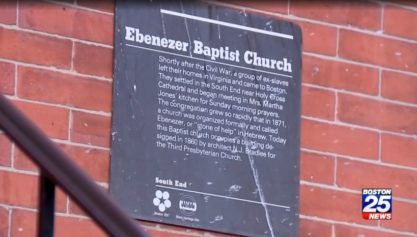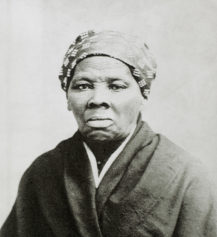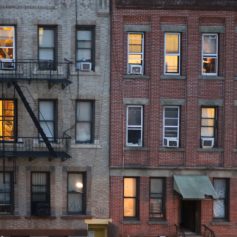Gentrification. A term coined during the 1960s, it’s a concept that’s become hotly contested in recent years, described by Webster’s dictionary as “the process of renewal and rebuilding accompanying the influx of middle-class or affluent people into deteriorating areas that often displaces poorer residents.”
The phenomenon has become a recurring theme across the country as urban areas once deemed unsuitable for affluent home buyers have become ground zero for new development.
Many students attend Texas Southern University, a ninety-year old institution in Houston’s historic Third Ward area, in search of an authentic Black college experience. But in recent years there’s been a change in the area surrounding the school, which has witnessed a decrease in its Black population. The percentage of African-American residents in the Greater Third Ward area dropped from 79 percent to 65 percent from 2000 to 2012 alone as the pace of change accelerated.
One of Houston’s six original wards, Third Ward was once described described by distinguished Clark Atlanta sociologist and former Texas Southern University dean Robert D. Bullard as “the city’s most diverse black neighborhood and a microcosm of the larger black Houston community.”
For years Third Ward served as a bustling hub of Black ownership in Houston, the Black-owned Unity National Bank and streets like Dowling, which once boasted over 150 stores during the 1950s. Roots run deep, with residents fiercely devoted to places like Emancipation Park, a community fixture founded by former slaves: Jack Yates, Richard Book, Richard Allen and Elias Dibble.
Due to limited resources, initially the park was only open to the public once a year for Juneteenth, a celebration of the effective end of slavery in Texas on June 19, 1865, more than two years after President Lincoln’s Emancipation Proclamation executive order declared their freedom. Since then it’s become an integral part of Third Ward’s history, serving as the only public swimming pool available to Black residents until integration during the 1950s.
The decline came gradually, after housing integration and upward mobility afforded wealthier Blacks the opportunity to move to newer subdivisions, leaving a number of dilapidated homes and shuttered businesses in their wake. Also at play was the construction of Highway 288, forcing a number of residents to give up their homes as construction expanded. As job opportunities began to dwindle, others began migrating from the area, creating a growing void in the neighborhood.
During an interview with the Houston Defender earlier this year, Gerald Womack, President and CEO of Womack Development & Investment Realtors explained, “Having ownership is important, and we have a lot of Black ownership in Third Ward. Unfortunately, many of these owners are grandchildren of the original owners, and live in other neighborhoods or out of state. Many see their properties as a burden or a drain on their finances rather than a plus. Many are selling these properties as the value goes up.”
The Defender also noted, “The vast majority of Third Ward’s Black businesses lease space, leaving them at the mercy of building owners who can increase the rent and price them out at a moment’s notice. Those that remain may find themselves dealing with a drastically different customer base.”
Meanwhile, vacancies have helped change the landscape of Third Ward, with homeowners increasingly pressed to sell their land to developers eager to insert luxury condos and townhouses into the area. Some 75 percent of residents are renters, but thanks to rates that rose nearly 5 percent from 2014 to 2015, many have found new properties out of their financial range.
For Texas Southern it’s meant a reduction of the very demographic that surrounds its campus. Once the only higher education option for African-American Houstonians, because of segregation the university has often been left to it’s own devices by Texas lawmakers, in favor of the larger — and more heavily endowed — University of Houston. Separated by only a few blocks, at times the two have competed for both land and resources, with TSU often on the losing end.
In a statement to the Houston Chronicle, John Nixon, a University of Houston law professor wrote, “What is happening in the Third Ward is a product of increased demand for inner city housing, developers who are willing to assemble land and build speculative houses to be offered to higher-income people willing to be pioneers in an area they previously shunned.”
For developers — all is fair in love and real estate — location factors heavily into the rush of new residents looking to get in on the ground floor of Third Ward’s revitalization efforts. Alyssa Gardner, a property sales representative, described the tactic to the Houston Chronicle as “We tell buyers that if you see something you like, snatch it up while you can. There are advantages to being on the edge of downtown.”
With the University of Houston actively buying up its own land in the area, officials like Texas Representative Garnet Coleman have started their own initiatives, teaming with local developers in an effort to buy land for affordable housing.
Residents are wary, with many able to recall the decline of the neighboring Fourth Ward. An early example of gentrification, for years residents fought to preserve the area once known as Freedman’s Town, founded by newly freed slaves. Settling along the flood-prone Buffalo Bayou, early residents worked hard to build their own community, paving their own bricks along hand-erected shanties.
Eager to protect the integrity of the community, for years residents fought to protect it, including a famous protest to retain Allen Parkway Village. Initially a whites-only property, thanks to integration it was later converted into a 963-unit public housing community.
Following a decision by the 5th U.S. Circuit Court of Appeals, the city of Houston demolished 677 units, under the provision that the site be used to provide low-income housing. The property was later added to the National Register of Historic Places, saving it from demolition, but other areas didn’t fare as well. In 1984, over 530 historic buildings had been registered: twenty years later, less than 30 remained.
After a series of losses at the hands of developers, Fourth Ward, which once boasted historic landmarks like West End Park — Houston’s first baseball venue for Negro leagues games — would see a sudden increase in mid-rise complexes and luxury properties in the late 1990s.
It’s a cautionary tale that former Houston Mayor Annise Parker described as “That was the downfall of Freedmen’s Town. That’s when most of the historic elements were moved or torn down so developers could put up townhouses.”
Even the 100-year-old bricks laid in Freedman’s Town came under fire, with some destroyed entirely, mistakenly dug up by city workers during drainage repairs last year. Yet another blow to a community still reeling from it’s erasure.
While some homeowners were able to take advantage of rising property values and escape the concurrent rising tax bills, others were not, including those living in areas hit hard by the crack epidemic. Left a shell of its former self, eventually Fourth Ward was assimilated into the newly minted Midtown.
Fearing the erasure of their own community, members of Third Ward have come together in an effort to educate and assist residents, including organizations like the Sankofa Research Institute and Project Row Houses, who have worked to preserve the community and increase ownership throughout the Greater Third Ward area.
Depending upon whom you ask, Third Ward’s transformation has been long in the making, with some eager to revamp the shotgun-style houses that dot the area. As Third Ward has changed, neighborhoods previously shunned by white students and young couples have become a haven for those that wouldn’t even go near the area five years ago.
TSU graduate Linda Williams expressed her views on the area she once called home by saying, “With urban planning and development, much of the historical context of Houston’s Third Ward area has been taken over the past five years. It’s become a culture shock for many residents in the area and has caused financial frustration to those who are struggling to keep businesses open and afloat.”
While some businesses, including the longstanding Wolf’s Department Store, have managed to keep it together, others haven’t been as lucky, with spots like Dowling Theater long gone.
According to Roderick “Bass” Tillman, Program Director of Third Ward after-school program Workshop Houston, a number of school closures have also accelerated the issue. Following the closure of Ryan Middle School, students were forced to relocate to Cullen Middle, a nearby school in Houston’s southeast area.
“I’ve been here since 2011,” Tillman explained. “Since then, the middle school that most of our students come from has been closed. In Third Ward itself, you see less kids around, less population because most of it is under construction. I think kids are searching for answers. At first it was a no-brainer that they’d go to schools in their neighborhoods. Now they face tough decisions on where they can go, because those schools just don’t exist anymore,” he said.
But after years of declining properties and vacant lots, others are eager for fresh changes and revitalization to the area, including a recent $33 million redesign of the 11.7-acre Emancipation Park.
Citing the recent progress made in the area, former Third Ward resident Elliot Guidry shared his own thoughts about the situation, “Don’t we want better for ourselves?” Guidry said. “Is it a bad thing to want to see the neighborhood you were born and raised in get uplifted? For that matter, TSU has gotten a major facelift. I love seeing the evolution of my neighborhood.”
But for others, it’s not so simple, including Third Ward resident Hope Carter. Carter said, “I’m a fan of the revitalization of my neighborhood, but not to appease people who are coming in.
“They’re taking over in the name of progress, but at the same time making everything else too expensive for the people who already live there,” Carter added. “Older people are having their property values lowered because they can no longer see the skyline. I’m not mad at revitalization as long as the improvements are for people who live there. A lot of times it feels as if all of these improvements were intended for someone else.”
Houston is not alone. Exploring the effects of gentrification on neighborhoods surrounding black universities, NPR recently highlighted the erosion of the Black working class near Washington, D.C.’s famed Howard University.
Similar to Texas Southern — Howard’s improvements to impoverished areas in the neighborhood also a drew an influx of new faces — causing rents and property values to rise as new construction brought wealthier residents in. For new students it’s meant a very different experience, as predominately black neighborhoods around a number of HBCUs continue to decrease.
It’s a reality that Darren Jones, president of the civic association in D.C.’s Pleasant Plains neighborhood, fears will become the new norm. The cost of living in an area now deemed a hot spot.
Addressing the difficulties facing property owners, he explained how his son has been affected. “His assessment is going to go from $400,000 to, well, maybe not $700,000, but something much higher,” Jones told NPR. “But the city is going to say your house is worth what the house is worth next door, which is not true because we can’t sell it for $700,000.”
Jones admitted that he is fearful for the future of his community, saying, “I’m afraid for my son because he grew up in this neighborhood and he would like to stay.”
Some cities are taking their own steps to address the effects of gentrification, including Houston, which rolled out a new program in April designed to revitalize a number of Houston areas, including Third Ward.
Unveiled by Houston Mayor Sylvester Turner, Jones proclaimed, “This is going to be a signature of my administration because it is so important to the families who live in these neighborhoods.
“We must not be a city of haves and have-nots. Every Houstonian has a right to make the choice I have made and live in the neighborhood where he or she grew up. With a more focused approach that involves the communities as well as partners in the public, private and nonprofit sectors, we can transform these neighborhoods. We are going to do this while striving to preserve affordability for existing residents, and we will not leave until we know what we have done will have a high likelihood of success.”
While the resilience of Third Ward is undiminished, the ability to preserve itself is not. Ultimately, the community will need more than legislation to address the issue, including a multi-pronged approach that tackles comprehensive revitalization without compromising affordable housing or the rich history of it’s residents.
During an interview with Rice University’s Kinder Institute, Project Row House Executive Director Eureka Gilkey shared the work that lies ahead: “We can’t halt gentrification; it’s already happening — but we have an opportunity to change the way this process works.


